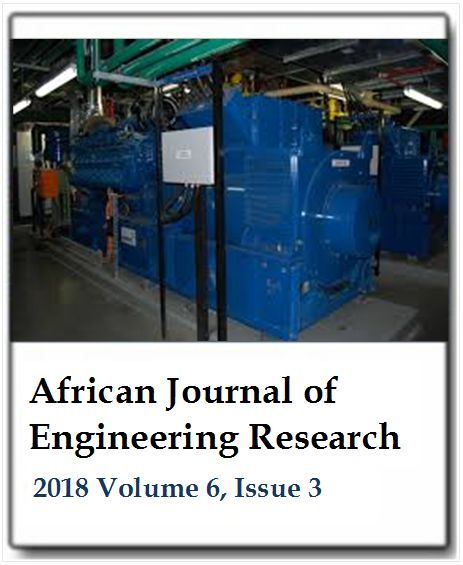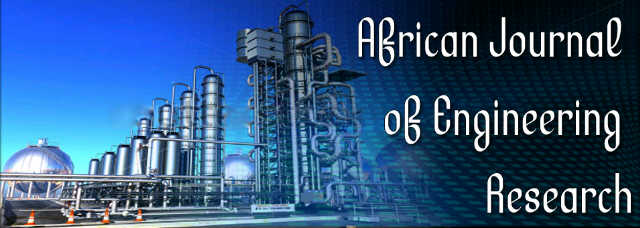Rainfall variation, water resources potential and implication for flooding: A case study of catchment area of major tributaries to River Benue in Taraba State
Temitope Adelalu Gabriel, Ibrahim Abdullahi and Alade Ezekiel JosephAfrican Journal of Engineering Research
Published: December 4 2018
Volume 6, Issue 3
Pages 55-63
DOI: https://doi.org/10.30918/AJER.63.18.028
Abstract
Rainfall is one of the most frequently discussed of all climatic variables in the tropics. This is because in conditions of reasonable uniform high temperature, it is rainfall that, by its presence or absence, scarcity or extremity, reliability or variability, determines the seasons, production or failure of crops, vulnerability of a place and directly or indirectly potential of water resources. Below or above normal rainfall, both have implications on agricultural sector and the stakeholders in the state. To fully exploit the potential of the water resources and to checkmate the excess from Lagdo dam in the state, the federal government has embarked on the building of a buffer (Kashimbilla dam). Using rainfall data for Jalingo, Gassol, Donga and Gembu for the period of 1979-2015 an attempt is made to establish the changing rainfall pattern and surface water potential in some selected catchment areas on Upper Benue River Basin in Taraba. The data were subjected to descriptive and trend analyses. The result shows that, except in Gembu, rainfall generally in the study area have been sporadic but with increasing insignificant upward trend. Inter annual variability was low. Annual rainfall coefficient of variation ranges from 2.3% in Donga to 17.5% in Gassol. Low values of coefficients are indicative of higher rainfall reliability and more dependability distribution. However when this resource is not properly managed and coordinated can serve as resistance bringing disaster. It is recommended that even though there may be some individual whom government must have been issued certificate of occupancies but fall within the risk of equal or greater than 50 years recurrence interval flood should be revoked, there properties acquired and they be relocated and resettled. Beyond the embankment should be under restriction for re-allocation strictly for dry season farming (Fadama). This when fully harnessed could bring bumper harvest and the world will see that Taraba is truly nature’s gift to Nigeria.
Keywords: Rainfall variation, water resources potentials, flooding, Taraba, catchment area.
Full Text PDFThis article is published under the terms of the Creative Commons Attribution License 4.0

